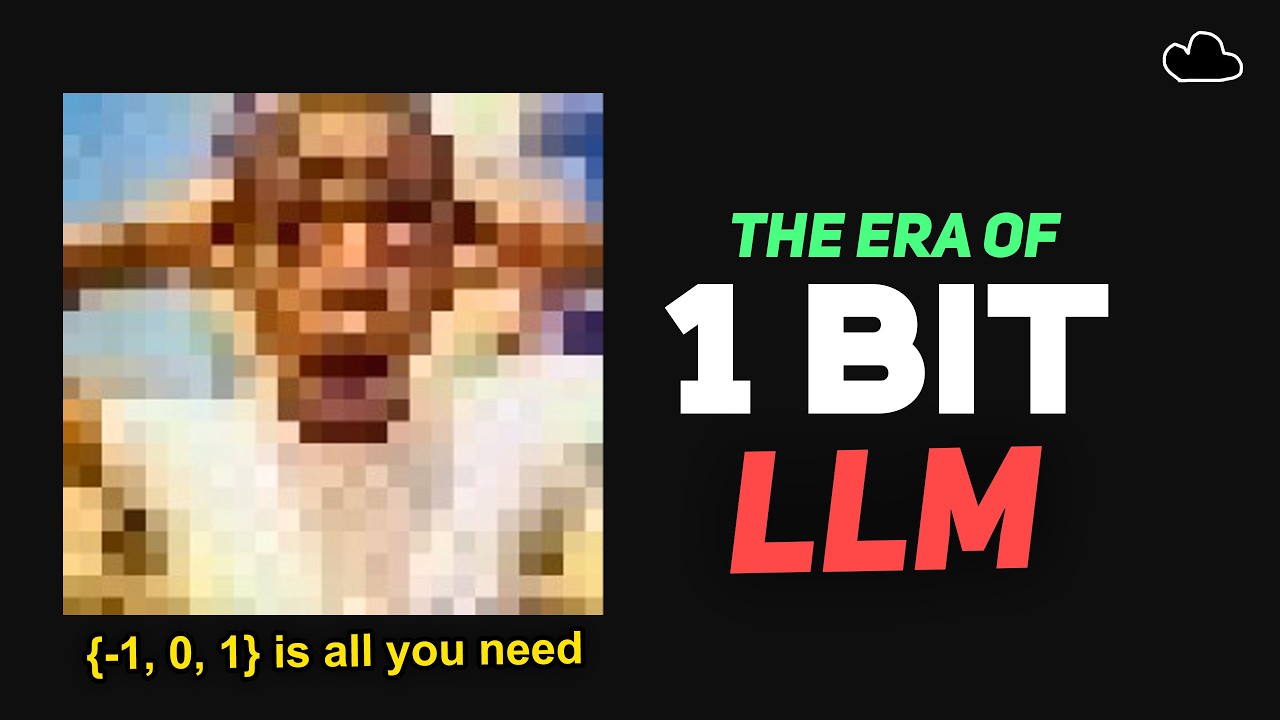The video explores BitNet, a novel large language model that uses one-bit and ternary quantization to drastically reduce memory, computational, and energy requirements, enabling efficient performance on limited hardware. Despite current hardware limitations and challenges, BitNet’s innovations promise to democratize access to powerful LLMs by making them feasible to run on more modest and cost-effective systems.
The video discusses the challenges and innovations in running large language models (LLMs) on limited hardware, focusing on the concept of quantization to reduce memory and computational requirements. State-of-the-art models like Deep Seek V3 require extremely expensive hardware, making them inaccessible to most users. Researchers have responded by creating smaller models or distilling larger ones, but even these require costly GPUs. Quantization offers a way to store model weights using fewer bits—such as FP8 or INT4 instead of FP16—significantly reducing memory usage while maintaining reasonable performance. This approach is often more efficient than simply using smaller models with full precision.
A groundbreaking development introduced in October 2023 is BitNet, a model trained from scratch using one-bit weights, representing only +1 or -1. This approach drastically reduces storage needs—potentially by 16 times—and computational complexity by replacing matrix multiplications with simple additions and subtractions. However, one-bit weights alone have limitations, such as always producing signals without the ability to “turn off” connections, which is important for model performance. To address this, researchers developed BitNet B1.58, which adds a zero state, enabling sparsity and allowing the model to deactivate certain connections. This version shows impressive memory savings and speed improvements, especially as model size scales up.
BitNet B1.58 demonstrates promising scaling laws: as the number of parameters increases, the model’s performance improves and memory efficiency grows. For example, a 70 billion parameter BitNet model uses over seven times less memory than the equivalent full-precision LLaMA model and is more efficient in speed and energy consumption than smaller full-precision models. Despite these advances, BitNet currently only quantizes weights; activations and KV cache still use higher bit precision, which remains a bottleneck. To further optimize, researchers introduced BitNet A4.8, which reduces activations to 4 bits and KV cache to 3 bits, enabling much larger context windows with minimal accuracy loss.
The video also highlights the significant energy and cost savings of BitNet. Training a two-billion parameter BitNet model requires roughly 20 times less energy and costs substantially less compared to traditional models. This efficiency makes BitNet an attractive option for democratizing access to large language models. However, current hardware is not yet optimized for BitNet’s ternary operations, meaning there is still room for improvement in deployment efficiency. The BitNet B1.58B4T models are available on Hugging Face for experimentation, and ongoing research continues to address technical challenges related to ternary transformer operations.
In conclusion, BitNet represents a promising new direction in LLM development by drastically reducing memory, compute, and energy requirements through innovative one-bit and ternary quantization techniques. While challenges remain, especially in hardware optimization and scaling training data, BitNet’s approach could make running large, powerful language models feasible on much more modest hardware. This could democratize AI access and enable broader experimentation and deployment of advanced models in the near future.
